Have you ever explored the Tokyo neighbourhood of Kita-Senju? If you’re planning a visit or thinking about staying in Kita-Senju, you might be wondering about the activities, sights, and dining experiences it offers.
Tokyo boasts a myriad of neighbourhoods and areas. While famous districts like Shinjuku, Shibuya, and Harajuku often steal the spotlight, there are numerous other amazing spots in the city. For those seeking a more local experience and the chance to discover hidden gems, Kita-Senju is a fantastic option. This guide to Kita-Senju will highlight the best things to do, top places to eat and drink, accommodation options, and some of the area’s hidden attractions.
One of the best ways to explore Tokyo is to visit the local areas and immerse yourself in the local culture. If you want to explore local areas, we have created scavenger hunt adventures personalised to your interests, filled with fun facts, clues and puzzles. If you’re curious, you can check out the games here! Check out the Flip Japan Games here! |
A Quick Primer to Kita-Senju

Kita-Senju has many old buildings and is a historic city where you can feel the atmosphere of Edo. Kita-Senju has become a popular tourist destination and a great place to live due to its easy access to five different train lines and the city’s calm atmosphere.
Senju Street Station was originally a fish store and has now become a tourist information centre for Kita-Senju. It has a nostalgic, retro appearance. There is also a mini-exhibition corner associated with Kita-Senju, where you can discover the history and culture of this area.
The Arakawa River flows through Adachi Ward, bringing a relaxing atmosphere to the area. The Adachi-ku Arakawa Visitor Centre is located about a 15-minute walk from Kita-Senju Station, where various exhibits and activities related to Arakawa are held. You can thoroughly learn about history and nature with extensive exhibits about Arakawa and the insects and aquatic creatures derived from the river.
Adachi is also known for the Adachi fireworks. The Adachi fireworks began in the Meiji era. It is said that the fireworks were launched to celebrate the completion of Senju Ohashi. The first Senju Fireworks Festival was held in 1918, and now it is held around the end of July every year. So, if you are in Tokyo at that time, make sure to drop by the Adachi fireworks!
Things to Do in Kita-Senju
Arakawa Visitor Center
Arakawa flows through Adachi Ward and brings relaxation to the people of Kita-Senju. The part from Iwabuchi Water Gate in Kita Ward to Tokyo Bay, which flows through Saitama and Tokyo, is surprising because it is an artificial river built over about 20 years.
The Arakawa Visitor Centre in Adachi-ku, about a 15-minute walk from Kita-Senju Station, is a tourist facility where various exhibits and activities related to Arakawa are held. You can thoroughly learn about history and nature with extensive exhibition content such as easy-to-understand explanation panels about Arakawa and the actual insects and aquatic creatures derived from Arakawa.
If you look at Arakawa again after gaining knowledge, you should be able to see the river in a new light. When you visit Kita-Senju, be sure to visit the Arakawa Visitor Centre in Adachi-ku and fully enjoy the charm of Arakawa.
Find out more about Arakawa Visitor Center here on Google maps.
Yokoyama Family House
The Yokoyama Family House in Kita-Senju, built in 1855, was a merchant house of a local paper wholesaler facing Senju-juku on the Nikko Kaido, which prospered as a post town during the Edo period. It seems they sold “Asakusa paper”, a type of toilet paper from the Edo period, to Nihonbashi.
Although it was rebuilt once in 1936, it is a tangible cultural property of Adachi Ward, where Kita-Senju is located. It has survived the fires of the Great Kanto Earthquake and the Pacific War and retains almost the same appearance as when it was first built. The solid appearance is spectacular and is one of the must-see sightseeing spots when visiting Kita-Senju. However, it is not possible to tour the inside of the building, so please be careful not to accidentally enter while sightseeing.
The vivid sword wounds left on the entrance pillar were made by Shogitai Ueno during the Battle of Ueno in 1868. You can also see the remnants of the turbulent times that changed from Edo to the Meiji era.
Find out more about Yokoyama Family House here on Google maps.
Senjujuku History Petit Terrace 千住宿歴史プチテラス
The History of Kita-Senju Petit Terrace is a tourist facility that has been relocated from the Yokoyama family, which was a local paper wholesaler during the Edo period. It is now also used as a gallery. From the exterior and interior of the dozo, you can feel the weight of many years. The exhibits are spectacular, and it is a place where you can contemplate the history of Kita-Senju, which prospered during the Edo period.
The scenery of the flowers in each season is very beautiful, and it is a recommended spot for those who want to relax and enjoy the history of Kita-Senju!
Find out more about Senjujuku History Petit Terrace here on Google maps.
Shosen-ji 浄土宗 三宮神山 勝専寺
Shosenji is a place where the bright red gate stands out. Also known as “Akamonji”, it is familiar to the people of Kita-Senju. The appearance of the main hall, made of brick with an exotic atmosphere, is also characteristic. Shosenji was founded in 1260 during the Kamakura period. During the Edo period, Hidetada Tokugawa, the second shogun, used it as a resting place for falconry, and it is said that Iemitsu, the third shogun, often stopped by the teahouse built in the precincts.
The current main hall was built in 1906. In preparation for the flood-prone land pattern of Kita-Senju, it is said that concrete was used as the main material and red bricks were fitted on the sides to create a sturdy structure that imitated an Indian temple to prepare for flooding.
Every year on January 15th and 16th, there is a festival called “Enma Opening” where a powerful statue of Enma, which is 1.8 metres long, is exhibited. This festival, which has many food stalls and is crowded with tourists, is one of the popular events in Kita-Senju.
Find out more about Shosen-ji here on Google maps.
Sekido Museum of Art 石洞美術館
The Sekido Museum of Art in Kita-Senju was built in 2006 with a focus on collections gathered worldwide by Senju Sato, who was the president and chairman of Senju Metal Industry Co., Ltd. It features a copper roof and a hexagonal exterior with reddish-brown brick tiles. In addition to being barrier-free, such as installing slopes, there is also a café “Myoko” run by people with disabilities.
The main collection is pottery, lacquerware, metalwork and other pottery. From the tea ceremony kettle to lacquerware, jade ware, and bronze ware, there is no doubt that you will be drawn to the many beautiful vessels from all over the world. The religious artworks, mainly collected from Indian religious art, are also worth seeing. This is a tourist facility in Kita-Senju that is especially recommended for those who want to enjoy peaceful sightseeing. Please thoroughly enjoy the Buddha statue of Gandhara and Hindu art.
Find out more about Sekido Museum of Art here on Google maps.
Senju Honcho Park 千住ほんちょう公園

About a 5-minute walk from Kita-Senju station, Senju Honcho Park is located along the Kyu-Nikko Kaido. It was created based on the concept of conveying the atmosphere of Kita-Senju, which was a busy post town during the Edo period, to tourists who visit Kita-Senju.
There are also Senjujuku historic sites and guide maps, so you can relax and imagine the scenery of the Edo period in the atmospheric park. It is not only a place of relaxation for the people of Kita-Senju but also a recommended park for tourists to enjoy.
Find out more about Senju Honcho Park here on Google maps.
Honmachi Center Shopping Street 千住ほんちょう商店街
Honmachi Center Shopping Street is located just outside the west exit of Kita-Senju Station. It is a shopping street built on the site of Senju-juku in the Edo period and is dotted with historical spots. Therefore, it is a popular spot among tourists visiting historic sites.
At the same time, it is also a local shopping district loved by the residents of Kita-Senju. You might think you’d go for a bit of sightseeing, but you couldn’t help but stay in the downtown atmosphere with a nostalgic scent.
Find out more about 千住ほんちょう商店街 here on Google maps.
Yoshidaya 吉田家
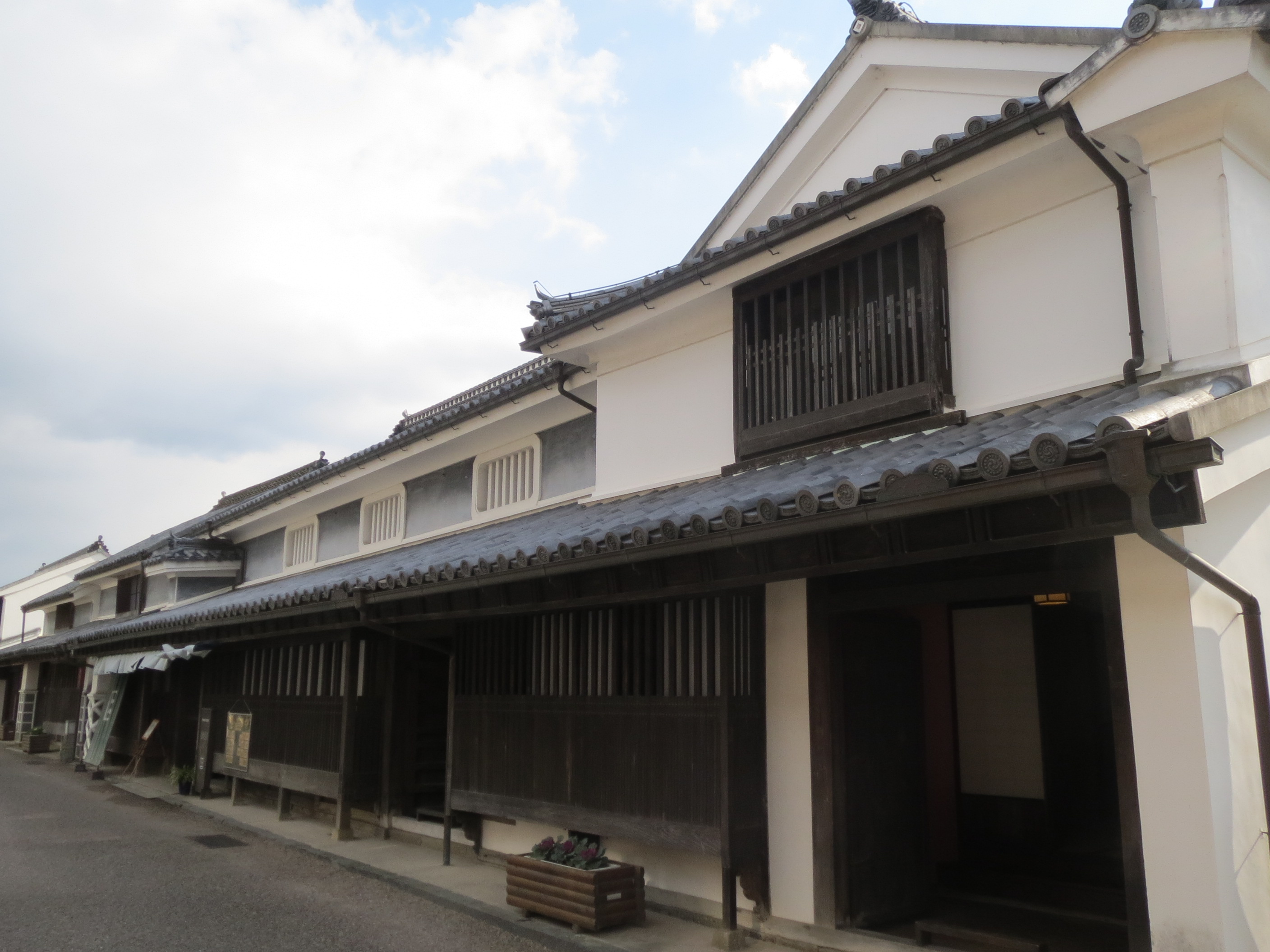
A votive tablet is familiar when visiting temples and shrines. Wouldn’t it be very exciting to write your wishes carefully and tie them to the shelves? Facing the old Nikko Kaido in Kita-Senju, Yoshidaya is a long-established votive tablet maker since the Edo period. The creator, Akiko Yoshida, is an intangible folk cultural property holder in Adachi Ward. They continue to follow the traditional method of making votive tablets from the Edo period.
You can’t see the inside of the building, but you can fully feel the weight of its history from the outside. Many votive tablets from Yoshidaya are dedicated to Choenji Temple in Kita-Senju, hoping for healing eye diseases, prosperous business, and academic achievement. Each votive tablet is carefully made and very beautiful. If you want to go sightseeing in the Yoshida family, be sure to visit Choenji Temple as well.
Find out more about 千住絵馬屋・吉田家 here on Google maps.
Top Restaurants in Kita-Senju
Chaka 茶香
Chaka is a popular dessert café in Kita-Senju, known for its fluffy pancakes and seasonal fruits paired with various ice creams. The most popular dish is the “Akari Pancake” for 1,300 yen, with an option to add a drink for 200 yen. The dough is light and melts in your mouth, leaving a sweet aftertaste. The fresh cream is sweet but very light, making it easy to enjoy.
The tea-scented pancakes are made with the master’s original blend. Each pancake is carefully prepared daily with fresh raw milk and buttermilk from Hokkaido, ensuring every item is made to order.
Find out more about Chaka here on Google maps.
Sd Coffee エスディ コーヒー
Sd Coffee in Kita-Senju stands out with its retro American feel on the outside and a Showa-era interior. The name Sd is an abbreviation for Suzuki Denki, and also stands for S for “Sento” and D for “Daisuki”, named after the store manager’s love for public baths and his parents’ electric shop.
About a 5-minute walk from the station, Sd Coffee features an interior themed around an electric shop and a public bath, complete with light bulb motifs and a mural of Mt. Fuji. The unique café serves original hot dogs in onsen buckets and offers fusion dishes and creative items reminiscent of the Showa period.
Find out more about Sd Coffee here on Google maps.
LaZAPPA 北千住店
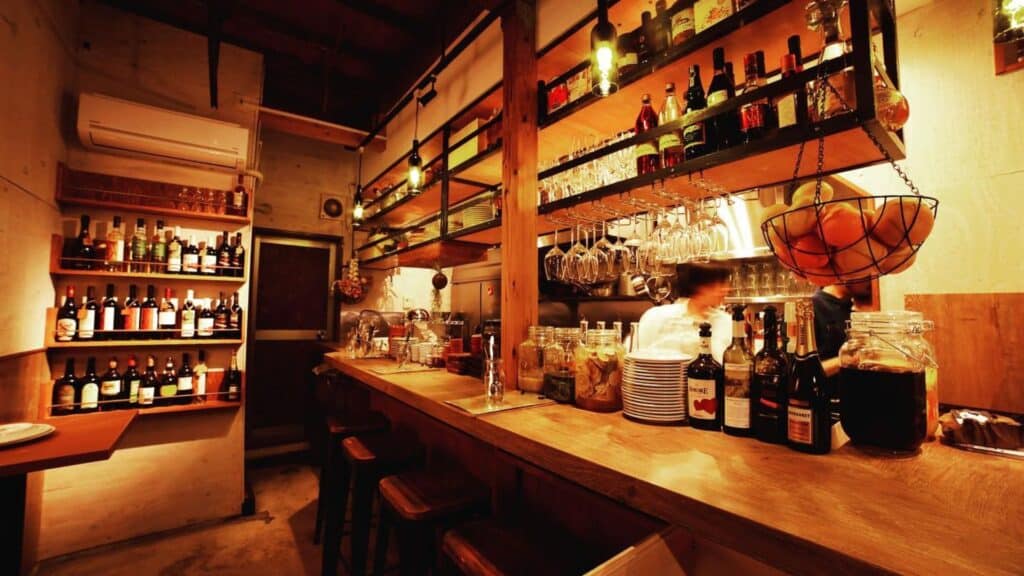
La ZAPPA in Kita-Senju is an Italian restaurant offering fresh organic vegetables and carefully selected wines. The antique-style restaurant has both counter and table seats, making it a convenient spot to visit after work.
The restaurant’s special vegetables are sourced directly from contracted farmers, and the bagna cauda, featuring a variety of seasonal vegetables, is a must-try. They also offer daily appetisers, handmade pasta, and various other dishes that pair well with wine.
Find out more about LaZAPPA here on Google maps.
Wakabado Cafe わかば堂
Wakabado Cafe in Kita-Senju is a cosy hideout in a renovated private house in a back alley. For lunch, you can relax with a view of the sky through the courtyard’s soft light. The café offers lunch, dessert, and drinks in a relaxed atmosphere. A typical lunch includes salad, bread, and soup for about 1,000 yen. For dinner, enjoy the gentle glow of antique lighting, candles, and music played by an amplifier.
Seasonal ingredients are used to create various dishes and desserts, with homemade bread and domestic wine available. The meat is cooked to perfection, making it a truly authentic dish.
Find out more about Wakabado cafe here on Google maps.
Ippo Ippo もう一つの家 一歩一歩
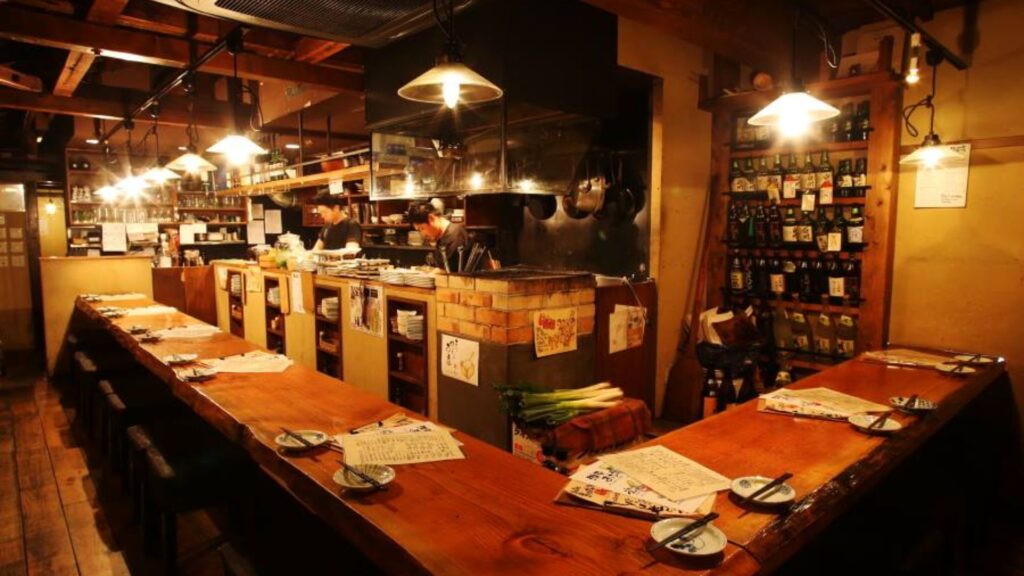
Ippo Ippo is a popular izakaya in Kita-Senju with a cosy atmosphere, located about a 1-minute walk from the west exit of Kita-Senju Station. There are tables and loft seats in the back, making it a great place to relax and enjoy a drink. If you sit at the counter seats, you can watch the robata being grilled in front of you, a popular feature among couples.
The restaurant focuses on handmade dishes made with care, avoiding chemical seasonings to provide the taste of homemade cooking. The made-to-order omelette is hot, fluffy, and delicious, while the shrimp mayo, with its handmade sauce and crispy batter, is a must-try.
Find out more about もう一つの家 一歩一歩 here on Google maps.
Matador Gyukotsu Ramen 牛骨らぁ麺 マタドール 本店
Matador Gyukotsu Ramen, located about a 4-minute walk from Exit 1 of Kita-Senju Station, is a popular beef bone ramen restaurant. The owner, a beef connoisseur, won the first ramen chef audition at Ra-Senju before opening his own store in his hometown of Kita-Senju. The restaurant features a modern atmosphere with black and striking red décor.
The soup is made from beef bones, seafood, and vegetables, providing a well-balanced flavour with the straight, thin noodles. Instead of roasted pork, the ramen is topped with a tender piece of roast beef. The stylish presentation and light aftertaste make it particularly popular among women.
Find out more about Matador Gyukotsu Ramen here on Google maps.
Obana 尾花
Obana is a renowned eel restaurant in Kita-Senju, located about a 5-minute walk from Minami-Senju Station. It has been awarded a Michelin star in the Michelin Guide. The main dish, unaju, is available at three different prices depending on the size of the eel. The eel is thick, firm, and fluffy, with a rich, sweet, and spicy sauce that complements the rice perfectly.
The umaki, filled with a thick layer of broiled eel, is also highly recommended. It showcases the richness and flavour of the eel, wrapped in a slightly sweetened Edo-style egg. The elegant aroma of the grilled eel and the texture that melts on your tongue make it a must-try.
Find out more about Obana here on Google maps.
Sunny Diner
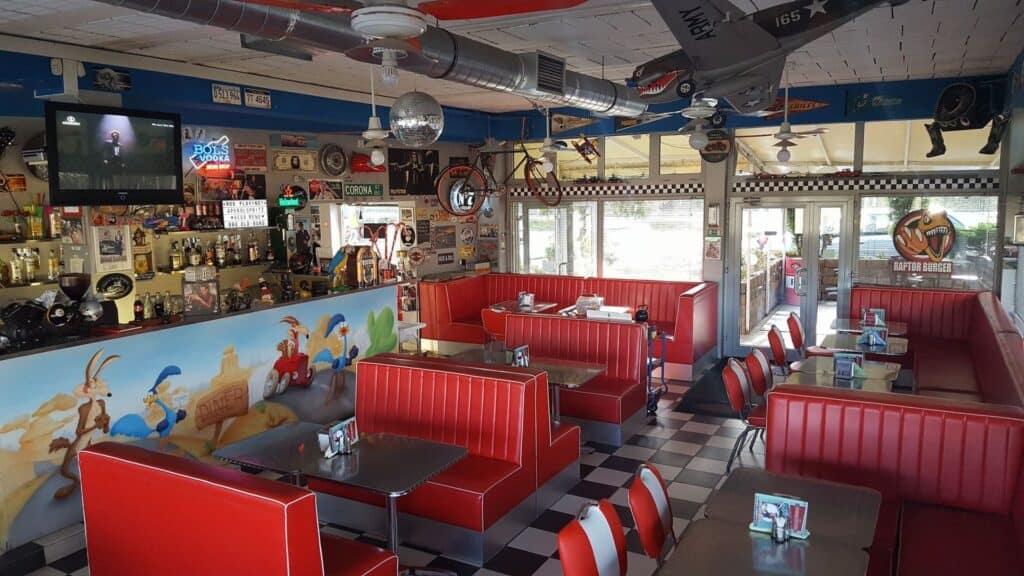
Sunny Diner, located about a 1-minute walk from Kita-Senju Station, is very popular for its authentic hamburgers. The restaurant’s red and white colour scheme gives it a pop American dining feel, with cute sundries and posters adorning the interior. The burgers are made with fresh vegetables and 100% domestic beef, following the concept of “delicious and healthy food carefully handmade.”
Two types of buns are available: one with poppy seeds and the other with sesame seeds, both offering a fluffy texture and rich flavour. The meat and vegetables are placed separately on the plate, allowing you to customise your burger. The friendly atmosphere and delicious gourmet hamburgers are sure to keep you coming back.
Find out more about Sunny Diner here on Google maps.
Sasaya ささや
Sasaya, located about 2 minutes from Kita-Senju Station, is a famous restaurant for Motsunoyaki (grilled beef or pork). The izakaya is run by an owner who trained at Shinjuku Sasamoto in Ginza.
The stewed skewers (600 yen) are highly recommended. The skewers, including huwa (lung), kashira (pork), and shiro (white meat), are tender and have no odour. They are seasoned lightly with salt to highlight the flavour of the motsu. The homemade liver paste, flavoured with herbs and black pepper, is another dish that pairs well with sake. Beef Harami Sashimi and Pork Liver Sashimi are also popular items.
Find out more about Sasaya here on Google maps.
Uzukino Honten 宇豆基野
Uzukino Honten in Kita-Senju is a unique tofu and namafu speciality shop. Uzukino offers a limited number of meals, made with great care in the on-site workshop.
The Uzukino Brunch at 2,800 yen, focuses on namafu and tofu dishes, available on Saturdays, Sundays, and holidays. This reasonably priced course includes 7-8 dishes, all-you-can-scoop freshly made namafu, and dessert. The explanations and demonstrations of making tofu and namafu are as enjoyable as a factory tour.
There are different types of yunami, with the first yunami having a refreshing taste, gradually becoming sweeter and mellower as they are harvested. The menu features dishes that make the most of each season’s characteristics. Enjoy the freshly made yunami and immerse yourself in the world of yunami.
Find out more about Uzukino Honten here on Google maps.
Recommended Accommodations in Kita-Senju
LANDABOUT TOKYO

LANDABOUT TOKYO, situated in Tokyo near Kita-Senju, boasts a restaurant, bar, shared lounge, and free WiFi. It is located 400 metres from Kemmyo-in Temple and 600 metres from Shunsho-in Temple.
The hotel rooms are equipped with a desk, a flat-screen TV, and a private bathroom, with all rooms providing a fridge. Guests can enjoy a continental breakfast. Popular points of interest near the accommodation include Tozen-in Temple, Tokugawa Ietsuna’s Mausoleum Gate Plaque, and Chosho-ji Temple. The nearest airport is Tokyo Haneda International Airport, 31 km away.
Hotel Coco Grand Kitasenju
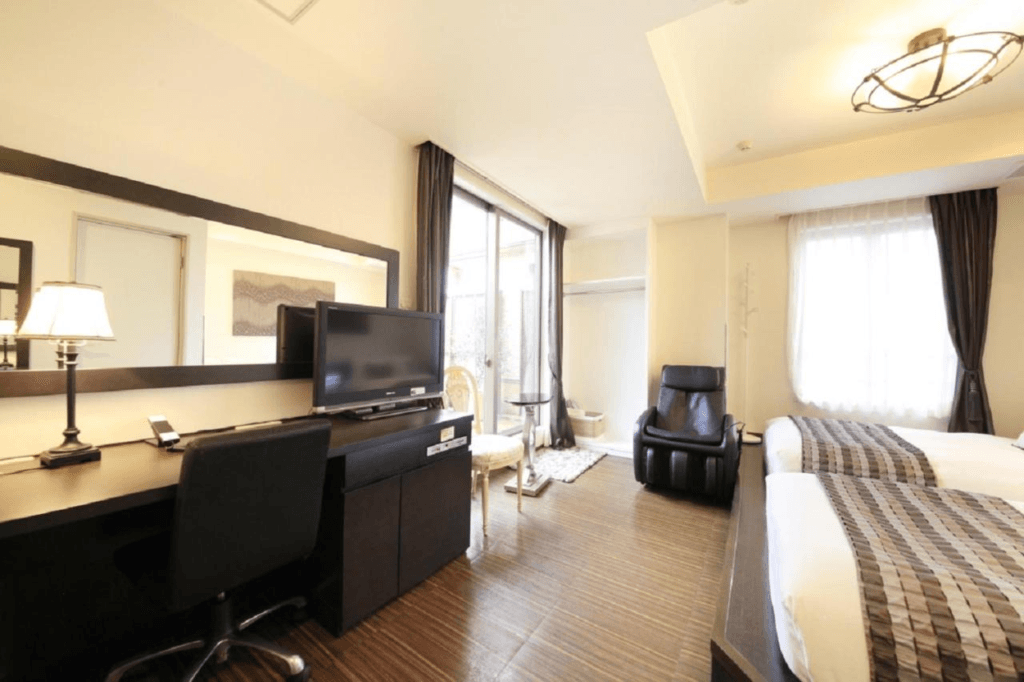
Just a 2-minute stroll from JR Kita-Senju Station’s West exit, Hotel Coco Grand Kitasenju offers comfortable rooms with free WiFi and a massage chair. It features a terrace, a hot public bath, and a restaurant. The hotel also houses a pastry shop.
Rooms are air-conditioned and equipped with a flat-screen TV, a fridge, and an electric kettle. Toiletries are provided in the en-suite bathroom, with additional amenities available.
Kita-Senju Coco Grand Hotel has a 24-hour front desk, offering dry cleaning, laundry services, and luggage storage. Complimentary coffee is available in the lobby. A daily breakfast buffet with Japanese and Western fare is served at the restaurant between 06:30 and 09:30. Guests can explore local shops, restaurants, and bars within a 5-minute walk around the hotel.
Guests can visit Asakusa and Akihabara via a 10-minute subway ride from Hotel Coco Grand Kitasenju, while the shopping areas of Ginza and Roppongi are accessible within a 35-minute subway ride. Haneda Airport is 50 minutes away by airport bus, and Narita Airport is 60 minutes away by train, connecting at JR Nippori Station.
Unveiling Kita Senju’s Treasures
Sure, Kita Senju isn’t smack dab in the center of Tokyo’s dazzling action. But beneath its off-the-beaten-path facade lies a treasure trove waiting to be unearthed. From the tantalizing aromas wafting from local restaurants to the vibrant energy of its streets, Kita Senju offers an authentic Tokyo experience.
This blog post is your key to unlocking Kita Senju’s magic. When visiting Kita-Senju, let it guide you through must-do activities, hidden gems, and delectable restaurants, ensuring your Kita Senju adventure is nothing short of unforgettable.


Recent Comments